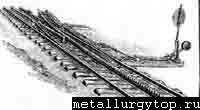Рынок расплатится за отсутствие страха
 Самое страшное — это полное отсутствие страха. Ослеплённые призрачным блеском обещанного триллиона долларов от ФРС, игроки почти перестали бояться новой рецессии в США и кредитных проблем Еврозоны. Вчера они начали расплачиваться за свою самоуверенность. Несмотря на позитивную макростатистику и очередное вдохновляющее выступление главы ФРС, американский фондовый рынок потерял порядка 0,8%, проведя худшую торговую сессию с августа месяца.
Самое страшное — это полное отсутствие страха. Ослеплённые призрачным блеском обещанного триллиона долларов от ФРС, игроки почти перестали бояться новой рецессии в США и кредитных проблем Еврозоны. Вчера они начали расплачиваться за свою самоуверенность. Несмотря на позитивную макростатистику и очередное вдохновляющее выступление главы ФРС, американский фондовый рынок потерял порядка 0,8%, проведя худшую торговую сессию с августа месяца.
Наиболее слабо выглядели металлургия и технологический сектор. В своём публичном выступлении господин Бернанке в очередной раз расписал прелести quantitative easing и блага, которые от него получит экономика. Однако рынок уже давно продисконтировал увеличение денежной эмиссии: опрос Bloomberg показывает, что инвестсообщество ожидает объявления о наращивании выкупа Treasuries на первые пол–триллиона уже 3 ноября. Реально же расстроило инвесторов вчерашнее понижение консенсус–прогноза прибыли компаний S&P500 на 2011 год. Это произошло впервые после кризиса, а динамика прогнозов прибыли считается хорошим опережающим индикатором для рынка.
Депозитарные расписки на акции российских компаний двигались разнонаправленно. После подтверждения сделки с Orascom более 2% потеряли бумаги «Вымпелкома„. Часть инвесторов перешла в МТС, чьи расписки подорожали на 3%. „Мечел» упал на процент с лишним вслед за американскими металлургами, однако “Норникель“ прибавил 0,4% после хорошей отчётности за 1–е полугодие. «На пустом месте» подрос Вимм–Билль–Данн. Азиатские рынки колеблются около нулевой отметки, сырьевые товары подешевели вместе с американскими акциями. Евро начал бодрую нисходящую коррекцию против доллара, что служит индикатором ослабления аппетита к риску. Российские фондовые индексы обещают открыться лёгким снижением порядка 0,5%, которое постепенно может развиться в более глубокую коррекцию.





A Historical Perspective
 Before you read this article, do a search on the web for a painting using the key words «Norman Rockwell watchmaker„ . Rockwell had a knack for capturing the very essence of his subject in his artwork and “The Watchmaker» is no exception. It should also be noted now that we are speaking of a mechanical spring powered 'wind–up' watch, not a modern quartz watch.
Before you read this article, do a search on the web for a painting using the key words «Norman Rockwell watchmaker„ . Rockwell had a knack for capturing the very essence of his subject in his artwork and “The Watchmaker» is no exception. It should also be noted now that we are speaking of a mechanical spring powered 'wind–up' watch, not a modern quartz watch.
The term Watchmaker was originally used to denote a craftsman or artisan who actually made pocket watches from scratch. In later years, this term became synonymous with a person who repaired both pocket and wrist watches due to the expertise needed. Even though actual watch manufacture was not part of a watchmaker's duties, the same level of craftsmanship is needed to repair a watch. Understanding of theory, mechanics, metallurgy, and manual dexterity were required. If a part was not available, it had to be made from scratch. This was especially true of the watchmaker who was isolated from urban centers where parts were not readily available.
Although requirements differed in each country, traditionally, a watchmaker would have many years apprenticeship under a skilled craftsman, and then would join a guild (specialized groups for any particular craft or trade). In more recent times, states and provinces would issue an official registration for watchmakers meeting specific requirements. Many schools existed for watchmakers, and companies such as Elgin provided training for employees. As part of this training, many classes actually required the student to make a pocket watch (using pre–engineered part dies and molds).
As the mechanical watch fell from favor, and cheaper quartz watches dominated the market, the number of watchmakers diminished as they aged and retired. Schools slowly closed, and formal training opportunities have become limited. The traditional watchmaker is now a rare find. The skills used in repair of mechanical watches, especially antique watches, is kept alive through the knowledge of experienced watchmakers, from older mostly out of print books and, interesting enough, the Internet. Much information can be obtained by searching the Internet, as there are many public domain books that have been scanned, and are available for anyone interested in watch collecting, and the history behind the mechanical pocket watch and the wrist watch.
So, take a look at the painting «The Watchmaker» again, and study the detail. Note the intense interest in the young boys face as he studies the seemingly magic of watch repair. That's the childlike interest that leads many today to keep these 'lost' crafts alive.
If you need to find someone qualified to repair a mechanical watch today, what do you need to know, and how to you choose? This will be the topic of companion articles.





Hitachi Table Saws - Model Highlights
 Hitachi is an international company, but the United States headquarters is located in Atlanta, Georgia. Hitachi products are available in almost 4000 retail stores with service centers numbering over a thousand. Hitachi claims on their website to have the best power tools available for professional use.
Hitachi is an international company, but the United States headquarters is located in Atlanta, Georgia. Hitachi products are available in almost 4000 retail stores with service centers numbering over a thousand. Hitachi claims on their website to have the best power tools available for professional use.
The United States branch of the Hitachi Corporation has been independently operating since 1948. However, their affiliation with the parent company affords Hitachi the advantages of quick access to new technology that is developed in other fields but can also advance the efficiency and performance of power tools. Because of Hitachi's expertise in metallurgy, plastics, and casting, this company can make power tools that are easier to use as well as faster in performance and more durable for long term use.
Hitachi uses a three dimensional computer aided design (CAD) system to build its power tools in virtuality before building a live prototype. By using this virtual prototype, Hitachi can do extensive analysis to find out where the most likely failures will happen. In this virtual setting the power tools can be tested for strength, vibration resistance, effects of impact, effects of harsh environmental conditions, and effectiveness of safety features. This process saves time and money by eliminating the need to build a real prototype and test it just to find that they have to go back to the designing board to start all over again.
This design system has led to improvements such as a cooling system that allows the tools to run for longer periods of time without burning out. Another technological advance improves the balance so that tools are lighter and easier to maneuver.
Hitachi's table saws benefit from all of these designs and advances. They offer three different models of table saws for various levels of work conditions.
- C10FL 10" Stationary Table Saw
This table saw is built for long rip cuts and repeated cross cuts. It has a 3 horsepower motor that is fully encased to protect it from the damages of dust and debris. The blade adjustment knobs are conveniently located on the front of the table saw. It includes a tabletop angle scale, T–slot miter gauge, and caster set, as well as a dust collection hook–up.
- C10FR 10" Job site Table Saw
This table saw is designed to do most of the same work as the stationary table saw but with some added features for portability. This model includes an LED light to make it easier to see the piece you are working on. It also has a cut indicator, miter gauge with nine positive stops, a dust chute, and a handy fold–and–roll stand to make moving the whole table saw easy.
- C10RA2 Table Saw with Stand
This portable table saw is somewhat smaller than the previous two models. The motor is 2.6 horsepower with a locking rip fence and front and rear guide bars. Safety features include a clear blade guard, a splitter that directs the split wood away from the user, an anti–kickback feature, and an electric brake. The tabletop is smaller, but this table saw only weights 64 pounds.
Hitachi warrants portable tools for five years and stationary tools for two years for the original owner. Any accessories are warranted for thirty days.
The company web site includes many positive testimonials from satisfied customers. Hitachi is a well–known table saw manufacturer with many retailers around the United States, so you are sure to find one of their table saws that might fit your needs.




